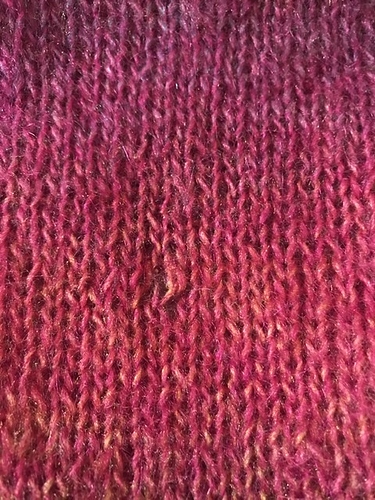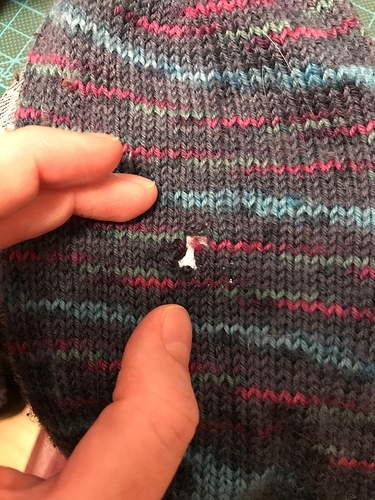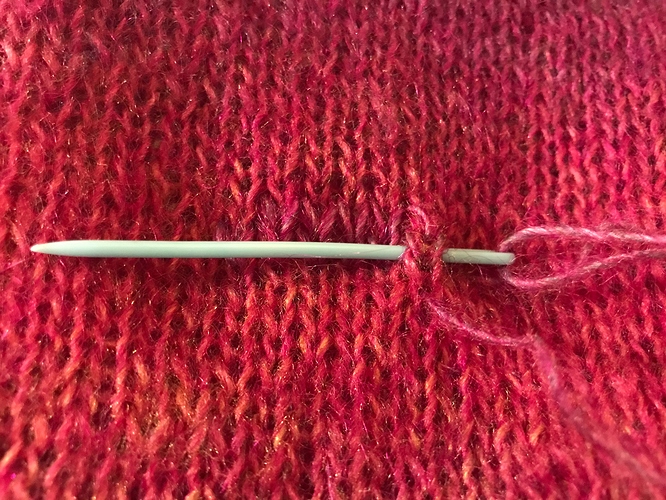Mending hand knits is an important skillset for a knitter and for anyone enjoying to wear handknits. Too much love goes into each stitch not to try mending the garment if there’s a hole.
Case in point. This lovely mohair sweater was made by my mother in law. Unfortunately I found a hole in the front of it one day. As luck would have it there was just a single yarn break, and due to the sticky nature of the yarn nothing had unravelled yet. Can you see the break?
This one is a bit more tricky. Several breaks and more than one column of stitches missing. However, it’s in the sole of the sock and I want a neat and tidy mend that’s as flat as possible. I’ll try using duplicate stitch here too, but it will be a bit more work.
Right, lets do the easy one!
I’ve marked the rows above and below the hole with pins to make sure I keep everything straight and catch the loose loop of yarn on the top row.
This is after the first row of duplicate stitches. I’ve done the first row of duplicate stitches and removed the bottom needle when I didn’t need the guidance any longer. I kept the top one since that held a loose stitch. If a garment starts to unravel it’ll run vertically and not horisontally. You can see the yarn end at the right in the picture. I keep it loose and hide/fasten it off at the end.
Here I’m trying to show how I duplicate stitch. Basically just follow the direction of the yarn and trace that loop, keeping the tension similar to the knitted tension. After pulling through I’ll insert the needle where you can see the yarn come out.
This is the back after pulling the ends to the back, fastening off and trimming the yarn. I like leaving a bit of length too it but might trim back more after washing it once,
All done! The middle row covers the hole and the top and bottom rows are there to reinforce the spot if there should be other weak spots in the yarn. Plus, it looked nicer. I could have made it truly invisible by finding a place on the spare skein that matched perfectly, but I like that it’s visible to me without being super obvious.
Back to the tricky mend in the next post.











